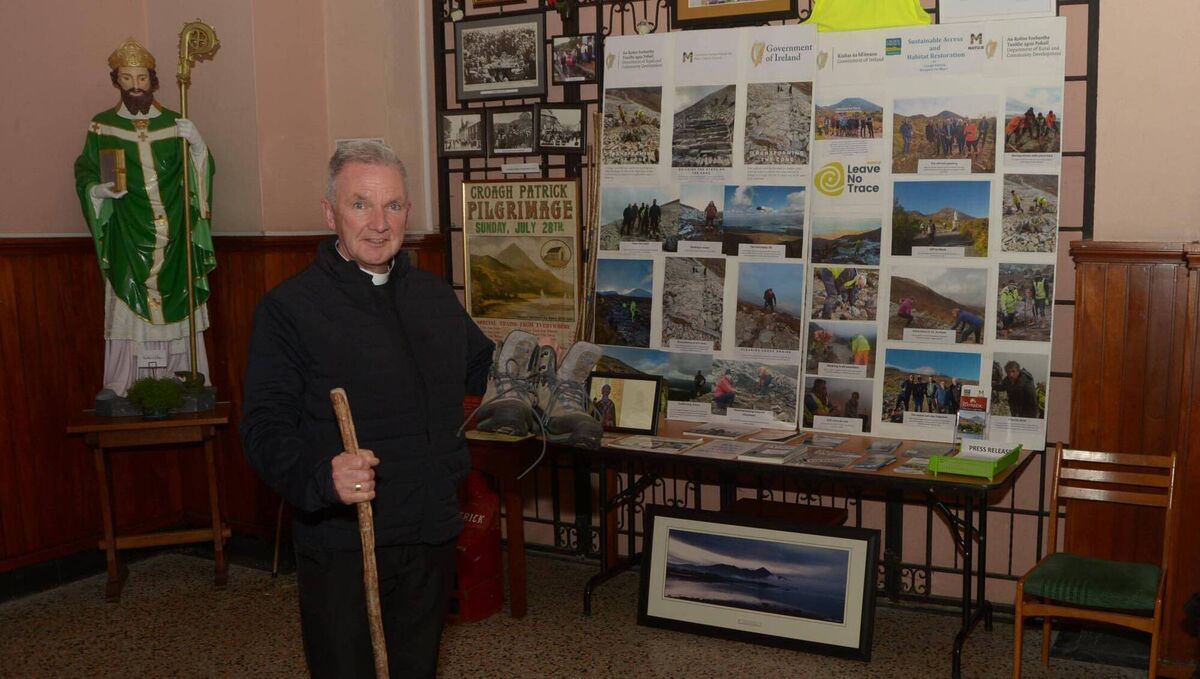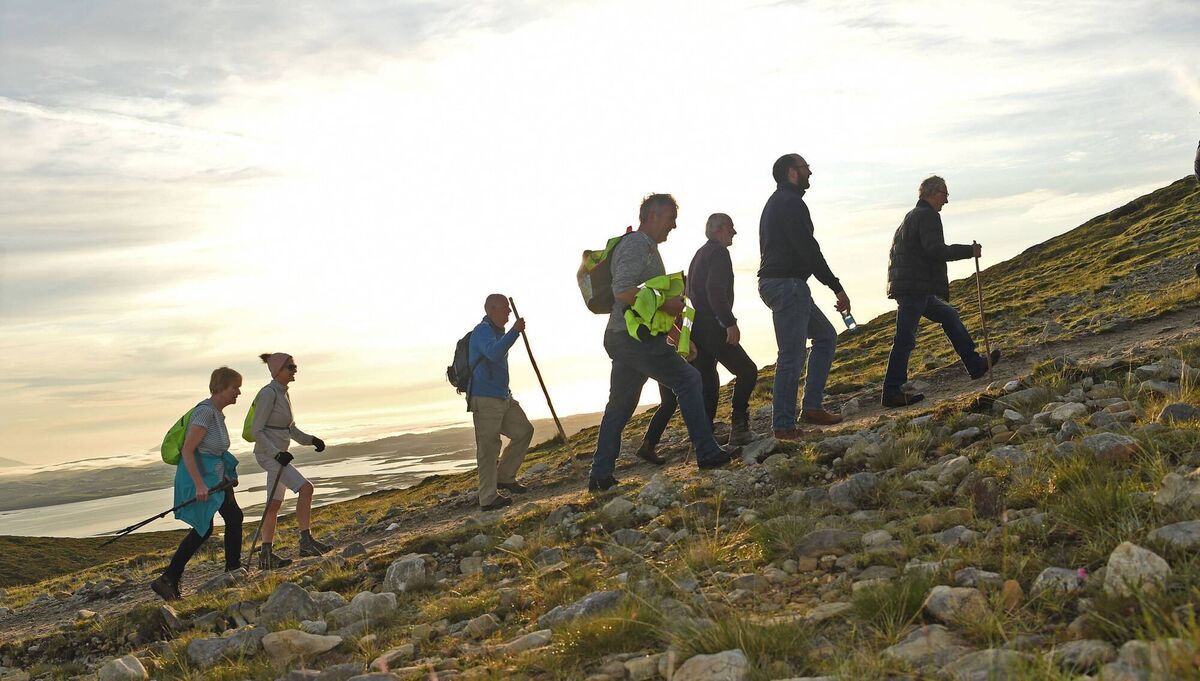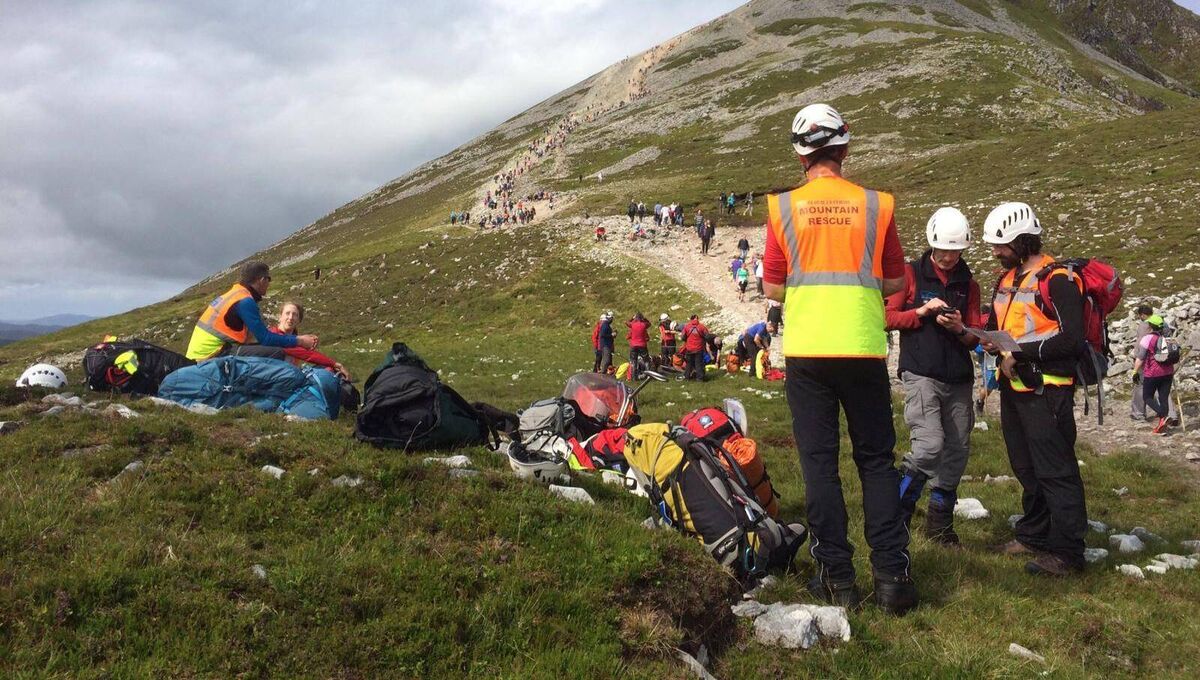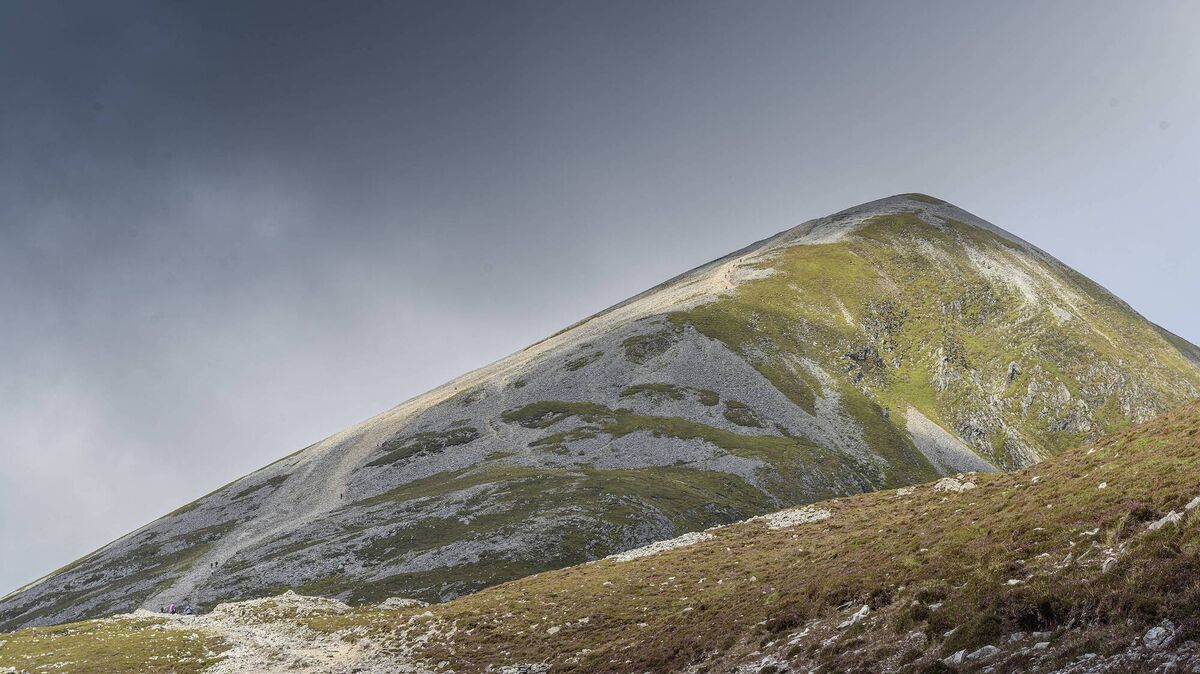Come rain, hail, or shine on Sunday, thousands of people will take to one of Ireland’s most well-known mountains to undertake the annual pilgrimage known as the Reek.
For more than 1,600 years, pilgrims have gathered at Croagh Patrick near Westport, Mayo, to climb the mountain as part of a spiritual and religious journey over 2,502ft. Known as Ireland’s “Holy Mountain”, the peak attracts people of all ages year after year — despite Ireland’s increasingly secular society.
This year’s pilgrimage has the theme of Christian hope. It takes place just months after the death of Pope Francis, who designated 2025 as a universal “Jubilee Year of Hope”.
According to the Conference of Irish Catholic Bishops, pilgrims who undertake this year’s pilgrimage at Croagh Patrick — as well as others at Lough Derg and Knock — will receive a pilgrim passport to earn stamps at each of the three shrines during this year.
Pilgrims who undertake all three pilgrimages are “eligible to receive a special commemorative Jubilee Year medal”.
While numbers attending for Reek Sunday have fallen, this is not being seen as a bad thing by the local clergy in Westport.
 Fr John Kenny launches the Croagh Patrick Sunday display at the back of St Mary’s Church, Westport. The annual national pilgrimage is on Reek Sunday, July 28. Pictire: Frank Dolan
Fr John Kenny launches the Croagh Patrick Sunday display at the back of St Mary’s Church, Westport. The annual national pilgrimage is on Reek Sunday, July 28. Pictire: Frank Dolan
Fr John Kenny, who is the administrator of Westport parish and one of the organisers of this weekend’s pilgrimage, says: “The numbers are down on every other year over the years for Reek Sunday itself, but the numbers climbing the Reek during the year has gone up.
“Reek Sunday’s popularity has waned in terms of the numbers attending because of things like All-Irelands.
However, Fr Kenny says that, in terms of the number of people visiting the mountain, overall numbers have increased across the whole course of the year.
“For example, last Sunday, we had four pilgrim groups on [the mountain],” he said.
This year has been particularly busy on Croagh Patrick for pilgrimages, according to Fr Kenny.
He said: “There have been more religious pilgrimages than in recent years because of the Jubilee Year 2025 Pilgrims of Hope.
Even though we are living in a secular word, in modern times, some pilgrimages turn into fundraising events— which is good
“People climb in memory of somebody or for a great cause and, if they do that, it is a modern way of pilgrimage.”
He estimates that, based on the numbers of communions they had, the mountain saw around 4,000 or 5,000 doing the pilgrimage in the past year.
“The official pilgrimage runs from 7.30am to 2pm, when we are on the mountain and we have our teams of people helping. But after that, from 3pm on, it kind of winds down. On a fine day, the climbing continues.”
“Previously, there may have been 50,000, 60,000, or 70,000 coming into the town on Reek Sunday — but there were no concerts, there were no big sporting events and festivals all over the country.
“It was a festival in its own right. There were young people climbing in the dark of the night after being out and that kind of thing — it was a very different era. But the attraction still remains and it is remarkable.”
 Early morning pilgrims making their way up Croagh Patrick, Ireland’s ‘Holy Mountain’, for the annual pilgrimage which traditionally takes place every year on the last sunday in July. Picture: Conor McKeown
Early morning pilgrims making their way up Croagh Patrick, Ireland’s ‘Holy Mountain’, for the annual pilgrimage which traditionally takes place every year on the last sunday in July. Picture: Conor McKeown
With the change to the GAA calendar, Reek Sunday now coincides with All-Ireland Senior Football final.
“Last year, it was Galway and Armagh in the All-Ireland and some fellas put up a Galway flag on the church. Armagh didn’t put up a flag and they won.”
John G O’Dwyer, whose book Great Irish Pilgrim Journeys was published in March, said that religion in itself is a search for meaning, which in essence is what pilgrimages are about.
The Tipperary native said: “In Ireland, we went through a very formalised structure, in other words religion, for putting meaning into our lives.
“It was extremely formalised, there was a way to do it, a path to salvation. It was laid out for everyone and was within churches, but the pendulum has swung now and people are swung away from that one-size-fits-all religion to each person searching for their own meaning.
Pilgrim paths do that because they take materialism away
He added: “When you are on a pilgrim path, it is a great leveller. It doesn’t matter who you are, whether you are Elon Musk or whether you are somebody who is unemployed. You get the same pressures — it is all about putting one foot in front of the other and getting to the destination.
“That is why I think there has been a blossoming of walking first in Spain and now in Ireland on pilgrim paths.”
 Mayo Mountain Rescue keeps a watchful eye on pilgrims climbing up Croagh Patrick for Reek Sunday.
Mayo Mountain Rescue keeps a watchful eye on pilgrims climbing up Croagh Patrick for Reek Sunday.
While doing the Camino in Spain continues to be popular, Mr O’Dwyer says that Irish routes including St Declan’s Way in Munster and the Reek are growing in popularity.
He points out that the Croagh Patrick pilgrimage has varied greatly in recent years, adding: “The traditional route would have been to come in from the south, in from Ballintubber.
The Reek would almost certainly have been a pagan destination because it is a beautiful mountain that stands out. We tend to look to the gods above us in the abode of gods
He believes that saints such as St Patrick converted the existing paths by “carving crosses into the standing stones”.
He said the route currently used by pilgrims on Reek Sunday “blossomed with the coming of rail transport and the arrival of railways in Westport, and that is when the present route became very popular.
“But the main path was from Rathcroghan (which was a medieval village and royal site), and the last stop on that was generally the Augustinian abbey at Ballintubber.”
 Archbishop Francis Duffy will be at the base of Croagh Patrick on Sunday morning to meet pilgrims ahead of their ascent. Picture: Michael McLaughlin
Archbishop Francis Duffy will be at the base of Croagh Patrick on Sunday morning to meet pilgrims ahead of their ascent. Picture: Michael McLaughlin
On Saturday morning, the abbey is the starting point for the Tochar Phádraigh Pilgrims of Hope Jubilee Pilgrimage, a hike of almost 42km, according to Fr Kenny.
At 6.30pm on Saturday evening, a vigil Mass will be celebrated by the diocese of Tuam’s Archbishop Francis Duffy in St Mary’s Church in Westport.
He will be at the base of Croagh Patrick on Sunday morning to meet pilgrims ahead of their ascent, while Bishop Fintan Monahan will celebrate Mass in Ireland at 10am outside the oratory on the mountain’s summit.
Fr Kenny said: “During the course of the day, there will be a team of priest on the mountain saying Masses and hearing confessions from 7.30am to 3pm.”
“The religious side of it is very important. Locally, there is an exhibition in the local town hall theatre about the pilgrimage over the year, and the back of the church in St Mary’s Church also has an exhibition of the pilgrimage on the mountain for people who may not get to visit the mountain.”
He said the weekend began with the Mass at the foot of the mountain on Friday evening from 7.30pm, “for people who used to climb or can’t climb”, in the Murrisk Café in the carpark at the foot of the mountain.
 78-year-old John Finneran has climbed the mountain every year for the last 61 years, being helped down the mountain by his son Tony. File Picture: Paul Mealey
78-year-old John Finneran has climbed the mountain every year for the last 61 years, being helped down the mountain by his son Tony. File Picture: Paul Mealey
Earlier on Friday, Mass at the summit of Croagh Patrick was celebrated at 10am by Westport native Father Tod Nolan, the parish priest of nearby Newport.
Over hundreds of years, millions of pilgrims have made the trip to Croagh Patrick on Reek Sunday in all kinds of weather.
In 2009, up to six children were treated for hypothermia amid blustery winds and heavy showers
The Irish Catholic Bishops Conference is urging people to take caution when undertaking the pilgrimage on Sunday. It describes it as a “physically demanding pilgrimage”, and advises would-be pilgrims to make themselves aware in advance of health and safety information about the mountain.
Many pilgrims opt to attempt the climb in bare feet, but the conference advises pilgrims to “come prepared for changeable weather conditions”.
“Pilgrims are advised to bring suitable warm-waterproof clothing, good footwear, walking stick/staff and water, and to be mindful of the safety of themselves and others.”
Proving it’s not the faint-hearted, those interested in participating are directed to mountaineering.ie and mayomountainrescue.ie/index.php/advise/safety/and/equipment for advice.
According to Mr O’Dwyer, “the whole idea of a pilgrim journey is that it is supposed to be challenging”.
A big motivation used to be that the [Catholic] Church used to grant indulgences, a kind of get out card from purgatory really, for yourself or other people
“What has happened in Ireland is that … some of the earlier paths have been reopened. St Declan’s Way is one. There is also the path from the village of Mall which is about 60km from Croagh Patrick.
“The modern [route] tends to be a relatively long distance path, so people can get into a sort of contemplative rhythm on it. It is not just one day. That seems to be what people are doing.”
He added: “The world goes on around you. You are on a more different liminal space when you are on these paths.”
